| Umělec magazine 1999/2 >> Metro and America | List of all editions. | ||||||||||||
|
|||||||||||||
Metro and AmericaUmělec magazine 1999/201.02.1999 Miloš Vojtěchovský | artist | en cs |
|||||||||||||
|
"Martin Kippenberger’s MetroNet-Connection project which he was developing several years before his death in 1997 consists in design and realization of seven sculptural installations representing architectural variations of metro entrances and exits. Each of them is, or actually was, on a different place, looks differently, is adjusted to fit the character and context of the location. All of them, however, are linked with a simple yet substantial fact: the stairs under ground (or up from ground) do not lead to any metro station, any means of traffic, you just cannot use them to get anywhere. They remind props of some obscure film set, fragments of city facilities, ripped out of the context of the location, absurd and pointless formations, passed by pedestrians with a mere shrug if noticed at all, just like I missed one of them at the last documenta X in 1997. It was not until I got hold of the Last Stop West catalogue published by MAK Center in L.A. in 1998 that I found information on the entire (unfinished) project. Impossible to handle at first, the object sank into deeper context and possible levels of significance.
A few factual notes: The first Entrance (1993) was built on the Greek island of Syros in the middle of ancient ruins, not far from an unfinished building of a slaughterhouse which Kippenberger turned into a paraphrase of a Museum as he called it MOMAS. Two years later, the second entrance was realized in Dawson, Canada, a city at the Alaska border. The photograph shows a parapet of macerated wooden bars with an unlikely looking cowboy riding in front of it. The next five „entrances“ were given the title MetroNet (perhaps an allusion to internet) and were constructed in Germany and the U.S. Each of them is different, but all share a peculiar mixture of functionality, inappropriateness, ugliness, turgidity, and professional production. The last one - an air-conditioning downcast which was intended for Tokio but was realized in L.A. after Kippenberger’s death, reduces the over-ground construction to a covered shaft exhaling sound of a passing train followed by a flow of hot air. This work could be interpreted as a reference to collapsing public transportation in the city and an appropriation of Bill Fontana’s sound installation for the Berlin train station which was completely destroyed during the allied attack at the end of the World War II. Some of the variants were designed to be mobile. A piece at the Metro Pictures, New York, was damaged by an excavator right after it was completed so that it would fit into the gallery door (a reference to Gordon Matta Clark’s performance during which he had two excavators destroy his Station?). Symbolic simulation of underground transportation connecting cities (as if in virtual manner), landscapes, continents, culture as represented by this permanent allegoric site-specific installation is evidently more than just a good gag. Besides, Norman M. Klein and Stephen Prina bring evidence that this project’s inspirations included a Buster Keaton film (The Frozen North, 1922) with its opening scene in which Frigo exits New York metro, ending up somewhere in the middle of snowy Nordic landscape. The other film inspiration is Francois Truffaut’s American Night (1973). Drawing on film (and literature) has evidently played an important role in Kippenberger’s work and the way he creates sets in the chain MetroNet project suggest his famous ability to play, play out, show off, activate and provoke response from everybody he gets in contact with. The world as permanent theater, reality as a lit stage, constantly changing props of a black comedy, a fragment of a sad Frigo slapstick comedy presenting absurdity, sentiment and melancholy in precise doses and nonpareil portion. Kippenberger’s credo is art as self-parody. Through breaking this pose of a serious artist in clown-like intervention, he shows just a flash of truly significant, wise, thoughtful and sympathetic view of the world. Kippenberger’s picture of the Dawson entrance installation shows one of the prote-esque, or janus-esque faces of the artist who built his career and personality on ambivalent behavior contrasting with his strength of judgement. It appears as if he was using mimicry or he could master the MPI syndrome; he could be the center of attention and at the same time back up to anonymity of hotel rooms at any point. Lonely, leaning against a wooden railing and wearing a messed up hat, he gives the camera’s eye a look that is half inquisitive and half theatrically contemplative. As if he represented the contradiction of a hooligan and a maecenas who managed the S.O. 36 punk club in Berlin in the 1980s, the “terrible child“ who so luxuriated in shocking and upsetting the German artistic establishment. The unbelievably multi-layered and multi-shaped self-reflexive self-portraits play an important role in both his work and life. The metro entrances bear not only a comical/parody-like allusion to art-historical issues of legitimacy of such notions as sculpture, installation, contextual or you-name-it art, appropriation of Robert Smithson, Piere Manzoni, Walter de Maria and Bruce Nauman works. In addition to a sort of elegant provocation and subversion, they also represent extra-esthetical and extra-artistic existential and ontological commentaries. Abandoned urban fragments of transportation architecture without the trains and passengers, without their meanings, life, without a chance to get on and get off might be read as paradoxical metaphor of disintegrated, dislocated world which bases its identity on communication and interconnectivity, functionality which at the same time suffocates and dies of the exhaust pollution produced by this process and which builds ever larger and ever less functional structures. Space for the search of meaning may be even larger: in European iconology, the entrance under ground has for centuries bore connotation with the space between life and death, with the connection between the conscious and unconscious, the vegetative and the spiritual, with after-life, with the life-cycle of dying and rebirth, with the Orphic myth of the artist. This may be a too courageous hermeneutic interpretation pushing the Kippenbergerian phenomenon to a bit romantic light but the obscure sign symbolism of sun, broken but intact egg, spider-web and a hammer which appears on the Dawson, Leipzig and Kassel metro entrances’ metal grids (referring to Lord Jim’s cottage - perhaps taken out of Joseph Conrad novel!!) indeed suggest deeper enigmatic and eschatological meanings not only concerning this project but also Kippenberger’s work as a whole. The initials of Kippenberger’s motto “Niemand Hilft Niemand“ (Nobody helps anyone) located right beneath the emblem do not shed any more light on this. The MetroNet project was partly realized in America yet it seems that it was anchored in Kippenberger’s European identity, the idea of the Old World based on myths of disappearing and hidden past, loss of the feeling of essentiality, on melancholic feeling of absurdity and fulfillment as experienced by a Becket character or a person waiting behind the closed door of Kafka’s parable on the Doorkeeper. In 1994, the Boymans van Beuningen Museum in Rotterdam was showing his installation The Happy End of Franz Kafka’s America. The extensive collection of 30 various office desks and twice as many chairs, accompanied with rotating couple of airplane chairs complete with umbrellas which were placed on green sprayed surface of the floor with white lines at the edges reminding a gigantic tennis court. Since then, the piece was shown in Copenhagen, Stockholm, Antwerpen and it is currently exhibited in Hamburg. This installation links to Kafka’s unfinished on-the-road novel telling the story of young Karl Rossman in the “New World“ where he was unwillingly sent by his angry father from his native Central Europe. The gigantic set-up suggesting the look of the Oklahoma Natural Theater visitors’ offices feels ambivalent - both grotesque and improper. It is a hybrid formation not revealing its relation to Art at the first sight. It may be also interpreted as allegory to hypermodern totalitarian society, atrophied with an urgent need of control, allegory of managers’ society producing its own self-travesty. Everything may be multiplied and repeated and everything stays the same. A liberal bureaucratic paradise with a sign reading Arbeit macht Frei. End of history’s distopy after Fukuyama. Mass immigration interviews taking place within the space of the installation represent symbolic acceptance to the post-industrial theater of the institutionalized world in which anybody can get a job but this kindness and seeming „openness“ of the mysterious employer is to be redeemed only by giving up one’s own individuality and identity. Kafka’s and Kippenberger’s America thus may be read as paradoxical “happy end“ of the modern times when the optimistic idea of progress - utopia - turns into its opposite, into a grim possible collapse of the ideals of humanity. Kippenberger and Kafka, however, are artists who resist an unambiguous interpretation. Who knows? The tragic and unstoppable fall into unfavorable fate during Rossman’s American adventure could in the end be surpassed by his promising career in the theater - i.e. artistic - project at the Oklahoma Theater. Both Kafka and Kippenberger lived mainly for their art work. The critical and ironic aspects of their work never questioned art in itself, they questioned its imperfection, mendacity, resignation to the absolute. America also represents a scene symbolizing human communication, discourse, it is rite de passage - a ritual of a transformation into a state of knowledgeable. The office furniture is not normalized or typified. Each piece of it has its own character and individual history, impersonating the absent people. The floor - a playground may be read as a metaphor of a game, a situation with set rules in which, however, the result depends on individual creativity and will to conquer. A number of seats surround the office scene where viewers may watch a landscape free of people and the feeling of theatricality without theater grows ever stronger. America is a social assemblage reflecting history of the 20th Century through the material of furniture; the exhibition’s catalogue is a collage of found photographs, layouts, drawings on hotel letterhead. Any kind of the author’s writing is missing as if Kippenberger resisted ready instructions how his work should be perceived and understood, letting everybody rely on their own intuition and thinking - which is a good thing to do as he keeps his feeling of mystery and pinching curiosity about what actually lies behind the closed door under ground. Kippenberger’s largest event as to space requirements in Veletržní palác (Czech National Gallery’s Modern and Contemporary Art Collection) places the installation into new, painful yet concrete context and takes on further meanings due to the building’s historical context as its surrounding area suffered as a place for gathering Jewish community members before their transports to concentration camps during German occupation. Kafka’s dark and grotesque story of Karl Rossman somewhat reminds the tragic fate of the castaways at the Jelly-fish Raft which has served as the theme for Gericault’s painting as well as Kippenberger’s last introspective figurative project. In 1996, he made 17 paintings, a series of drawings and lithographs in which he posed in positions of sailors from Gericault’s painting. His gestures at the pictures are exaggerated, theatrical, almost hysteric, radiating absorption in their own absorption of the artist’s loneliness, hopelessness and mortality. Kippenberger presents himself as a suffering, desperate, wounded man denuding his own painful and ephemeral flesh. Similarly to his previous paintings, he is the object of his fierce and grotesque gaze but the mirrored image which he sees casts mist on the border between an acted pose, mockery, irony, myth and truth. The selection of self-portraits which was completed in the Gerricault cycle will be presented in combination with Kafkaesque installation of the artist who is a legend of the West European art of the end of the century, whose work reflects uncertainty and distress, inevitably accompanying the ending century. "
01.02.1999
Recommended articles
|
|||||||||||||
|
04.02.2020 10:17
Letošní 50. ročník Art Basel přilákal celkem 93 000 návštěvníků a sběratelů z 80 zemí světa. 290 prémiových galerií představilo umělecká díla od počátku 20. století až po současnost. Hlavní sektor přehlídky, tradičně v prvním patře výstavního prostoru, představil 232 předních galerií z celého světa nabízející umění nejvyšší kvality. Veletrh ukázal vzestupný trend prodeje prostřednictvím galerií jak soukromým sbírkám, tak i institucím. Kromě hlavního veletrhu stály za návštěvu i ty přidružené: Volta, Liste a Photo Basel, k tomu doprovodné programy a výstavy v místních institucích, které kvalitou daleko přesahují hranice města tj. Kunsthalle Basel, Kunstmuseum, Tinguely muzeum nebo Fondation Beyeler.
|








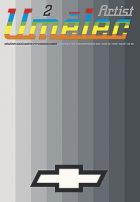

















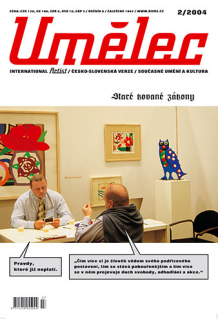




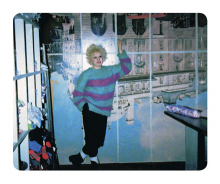
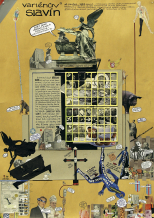
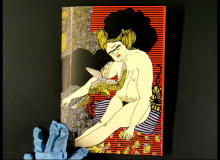
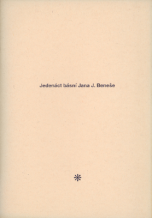


 We Are Rising National Gallery For You! Go to Kyjov by Krásná Lípa no.37.
We Are Rising National Gallery For You! Go to Kyjov by Krásná Lípa no.37.
Comments
There are currently no comments.Add new comment